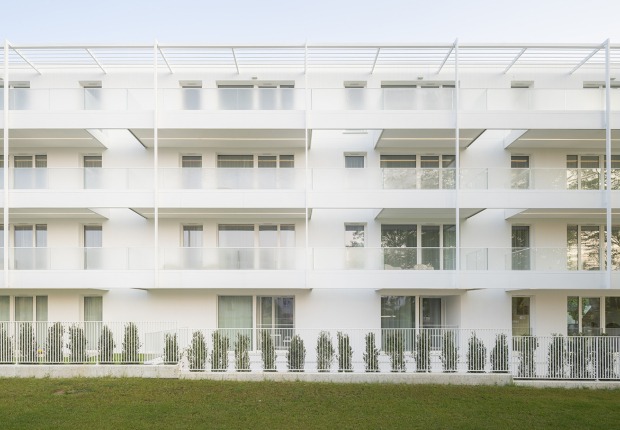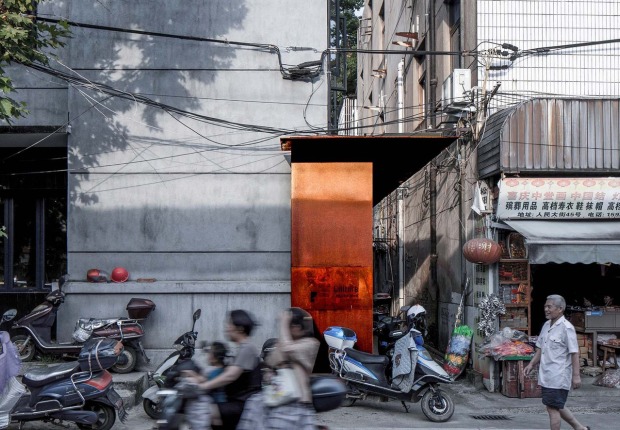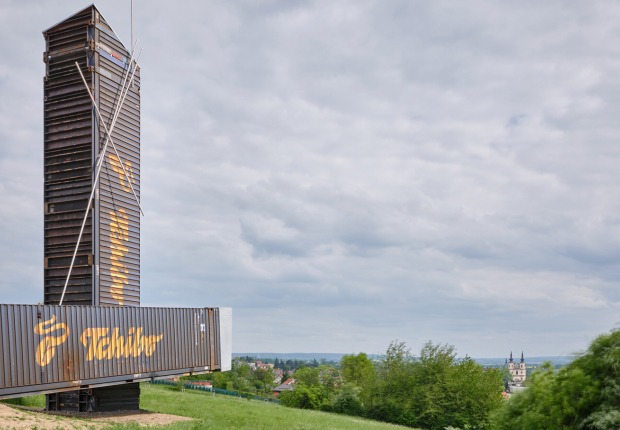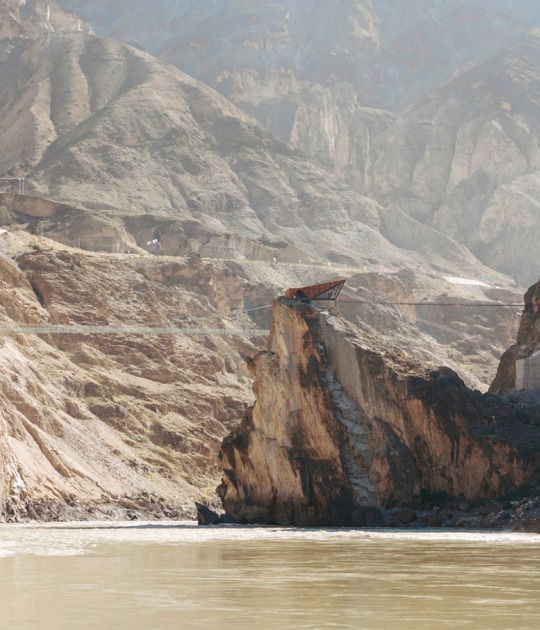
The centerpiece of Archermit's proposal is a 37-meter cantilevered steel and glass platform, reproducing the shape of a tight curve and suspended over a drop of more than 130 meters. The highly transparent glass floor intensifies the sensation of vertigo, transforming the ride into an aerial walk. Added to this are installations such as the zip line, the glass suspension bridge, and the "Thrilling Steps Challenge," along with a restaurant, café, and supermarket integrated into the cliff. The complex offers immersive, participatory, and challenging experiences.
Landscapes such as Ranwu Lake, Laigu Glacier, and the Nujiang Grand Canyon frame an intervention that links landscape, engineering, and infrastructure.
The project uses weather-resistant steel and safety glass. The reddish steel evokes Tibetan cultural colors while withstanding extreme conditions, while the glass ensures safety and transparency. The platform, designed with a single cantilever, is the main structural challenge, evoking the construction scenes of the G318. With this, the work becomes a new tourist and cultural landmark for Tibet, honoring the road as a symbol of courage and perseverance.

Nujiang River 72 Canyon Scenic Area by Archermit. Photograph by Arch-Exist Photography.

Nujiang River 72 Canyon Scenic Area by Archermit. Photograph by Arch-Exist Photography.
Project description by Archermit
Every child who dreams of Tibet holds a G318 dream. The Sichuan-Tibet Highway, renowned as "China's Scenic Avenue," has always been a sacred route for travelers. About 200 km past the junction of the southern and northern Sichuan-Tibet routes from Chengdu to Lhasa lies the most spectacular part of the journey. Famous attractions such as the Bangda Grassland, Nujiang Grand Canyon, Ranwu Lake, and Laigu Glacier are scattered throughout the small town of Baxoi in eastern Tibet.
The Nujiang River 72 Turns Canyon Scenic Area is located in Buze Village, Baxu County, Changdu City, Tibet, approximately 48.5 kilometers from Baxoi County and about 97 kilometers from Bangda Airport in Changdu. This area is home to the most dangerous section of the G318 Highway—the 'Heavenly Road 72 Turns' and the Nujiang Grand Canyon. The design, construction, and future visitor experiences of the Nujiang River 72 Turns Canyon Scenic Area all embody a spirit of great challenge and pay tribute to the monumental achievements of the Sichuan-Tibet Highway. All design inspiration comes from this magical scenic avenue.

The high-altitude glass viewing platform serves as the core structure of the project, inspired by the iconic 'hairpin turn' road layout of the Nujiang River 72 Turns. Perched on the cliffs of the Nujiang Canyon, with a drop of over 130 meters, the steel truss structure extends outward with a single cantilever of 37 meters, forming the 'hairpin turn.'
The ground is laid with high-transparency safety glass, creating a true 'heavenly road' in the air, transforming the thrilling driving experience of the Nujiang River 72 Turns into an ultimate high-altitude walking experience. This allows visitors to deeply experience the majestic wild beauty and breathtaking allure of the Nujiang Canyon. The exterior materials primarily consist of weather-resistant steel plates in a Tibetan red color, responding to the cultural significance of the region's colors while also standing out from the surrounding environment.

The highly weather-resistant steel is not only sturdy and durable, but its rough texture also engages in dialogue and fusion with the rugged landscapes around it. The design inspiration for the zipline across the Nujiang River, the Thrilling Steps Challenge Bridge, and the glass suspension bridge also come from the various special construction scenes during the building of the G318 Highway. Beneath the glass skywalk, there is a cliffside restaurant, a coffee bar, and a multifunctional supermarket, all offering an immersive experience. The entire project is highly participatory, interactive, and challenging.
The Nujiang 72 Turns Canyon Scenic Area strives to take the experience of the natural peril of Nujiang to the extreme, promoting the idea of 'seeking danger within danger, challenging oneself.' It aims to establish a new geographic landmark for Tibet. Travelers are encouraged to break free from the confines of their vehicles and use their own strength to traverse the perilous terrain of Nujiang, turning the journey into a warrior's challenge along the Sichuan-Tibet Highway.






































































